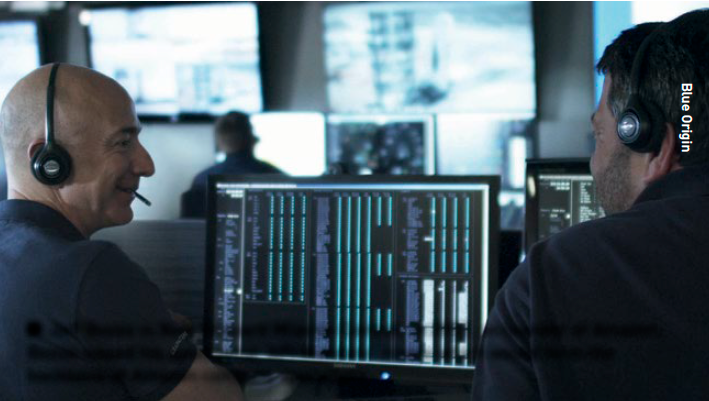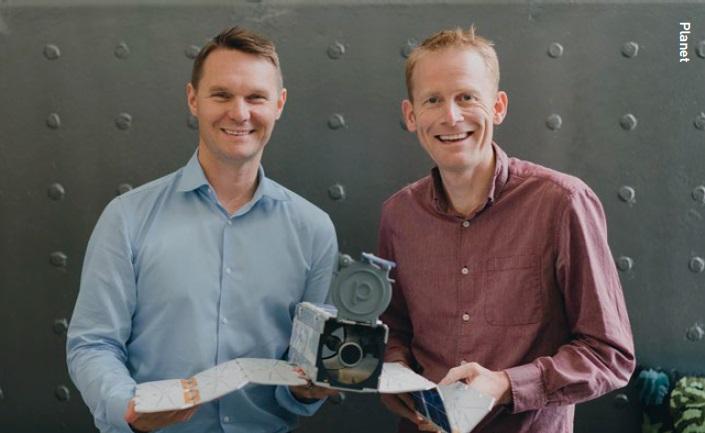It is often said that “space is difficult”. Space is a challenging environment for which to design and build equipment and it is difficult to make sure it continues to operate once it is in space. Here, the author looks at the space development mindset and suggests a methodology for improvement.
The space industry is a world where pain tolerance isn’t a virtue. For better or worse, it’s a way of life and the industry seems to thrive on a high pain-tolerance mindset. But it can be a double-edged sword, leading both to groundbreaking achievements and to emotional scar tissue that reveals itself as an aversion to risk. This is because design engineers have to overcome the extreme constraints placed on them by the space environment and wrestle with complex hardware development challenges with very little hope of fixing issues once their hardware is in space. This makes for a ‘pressure cooker of risk’.
We’ve all seen the movies and heard the stories about the creativity and sheer willpower needed to survive in space. Think Apollo 13, where creativity and perseverance were the heroes. In reality, the space industry is full of companies that push through adversity with an ‘at all costs’ attitude.
A clear differentiator between those who thrive in space and those who falter is the ability to approach hardware development with a focus on ‘reducing friction’Planet
SpaceX, for example, was up against bankruptcy if it didn’t get a Falcon rocket to orbit on its fourth launch, but it kept pushing forward. Very few industries have the ability to go through such significant failures and keep going. This grit breeds extreme discipline, truly world class creativity and attention to detail unlike any other industry, but it also leads to an ‘if it ain’t broke, don’t fix it’ mentality that can negatively permeate the company culture. In other words, the industry becomes risk averse.
A clear differentiator between those who thrive in space and those who falter is the ability to approach hardware development with a focus on ‘reducing friction’. The space industry’s need and obsession with overcoming adversity often means dealing with complex hardware development processes. Fixing tangible objects in space is barely possible, as of today, and the challenge is compounded by the fact that humans are involved. So these challenges aren’t just technical; they are cultural. Every success is built upon the deep ‘scar tissue’ of many failures – usually extremely expensive and therefore brutal lessons – and this can make it hard to adopt new, more efficient methods.
 Jeff Bezos in New Shepard Mission Control. In 2002, as founder of Amazon, Bezos issued his apocryphal ‘API Mandate’ memo which would form the backbone of Amazon company operations.
Jeff Bezos in New Shepard Mission Control. In 2002, as founder of Amazon, Bezos issued his apocryphal ‘API Mandate’ memo which would form the backbone of Amazon company operations.
Simplicity wins
Winners like SpaceX and Planet have shown that simplicity can be a game-changer. Their focus on reducing friction through streamlined systems and internal software tools has been key to their success. These tools compensate for human errors and preserve institutional knowledge, ensuring that past mistakes are not repeated.
Design engineers have to overcome the extreme constraints placed on them by the space environment and wrestle with complex hardware development challenges
In fact, SpaceX’s approach flips the traditional mindset: instead of obsessing over the product’s complexity, its system focuses on making the production and development process - the factory - more efficient, and removing components wherever possible. Extremely rapid incremental improvements in production processes have led to greater efficiency and allowed the company to enter the market sooner. But what kind of production processes? Many companies have adopted processes that no one is allowed to touch for fear of severing critical functions. These are not the type we need.
 Planet co-founders Will Marshall and Robbie Schingler hold a model of a Dove satellite in Planet’s headquarters in San Francisco, California.
Planet co-founders Will Marshall and Robbie Schingler hold a model of a Dove satellite in Planet’s headquarters in San Francisco, California.
In 2002, Amazon founder Jeff Bezos issued his apocryphal ‘API Mandate’ memo (where API stood for Application Programming Interface), which would form the backbone of Amazon company operations. The companies that thrive today tend to operate with the Bezos’ API-memo mindset, which means implementing scalable systems and mechanisms that minimise human error and streamline workflows. This in turn allows organisations to maintain a history of decisions and avoid repeating mistakes.
This is largely done through software, whether built internally or externally, and success may depend on whose implementation is best, but speak to engineers who have left exceptional hardware manufacturing companies and they’ll lament the loss of systems that were easy to use, minimised risk and allowed them to do their jobs more easily.
Not only does implementation of these systems from the beginning improve company morale, allowing people to provide value in line with their capabilities, it also means that incremental improvements and repeatability of the designs enhances market dominance. This could mean that fewer human resources are needed to build the hardware, but those people are able to do more work, more efficiently. So, when you do add to your development team, you can plug them into existing systems and increase your efficiency, consistency and speed to market with each new hire.
Increasing productivity
For most companies, 90 percent of their employees’ time is spent on things that don’t matter, with only 10 percent of time, energy or effort spent on things that actually add value
A great example to keep in mind is the 90/10 rule. For most companies, 90 percent of their employees’ time is spent on things that don’t matter, with only 10 percent of time, energy or effort spent on things that actually add value. This needs to flip, and the best way to do it is iteratively, over time, through the implementation of effective systems, software that actually works for hardware development and an ‘API mindset’ for team communication. It’s arguably the only way to accelerate efficiency, get consistency, supercharge growth and dominate the market.
So this is a good place to start. Assess where your employees’ time is spent; if only 10 percent of their time adds value, do you know why? Is it because you don’t have the systems in place to enable them to focus on the tasks or projects that add value? Have you hired people to maintain systems that fundamentally aren’t working? Are there systems or workflows you could build internally that could substantially increase your consistency and efficiency?
While I don’t think the agile methodology works for hardware, there are many software practices that have been successfully applied to hardware development. Rapid iteration and continuous improvement is the most applicable and is what the top organisations embrace.
But you don’t have to replace entire systems all at once; that’s generally a recipe for employee frustration, bloated spend and the potential for increased risk. Incremental changes in small teams have proven to be highly effective, in that they can then be pushed outward to larger teams, and then company-wide, much like a continuously deployed pipeline for software.
 The symbolic ‘Road to Space’ sign at Launch Complex 36 in Cape Canaveral, Florida.
The symbolic ‘Road to Space’ sign at Launch Complex 36 in Cape Canaveral, Florida.
In addition, make sure your teams are able to analyse and understand where efficiency breaks down. Eventually, a dedicated team focused on tackling these issues problem-first, not solution-first, works well.
Ultimately, what it comes down to is not innovating in every area except your workflows. If you let that stagnate, everything else you do suffers with it.
About the author
John Conafay is a US Air Force veteran and the CEO and co-founder of Integrate, which builds programme management software with a systems engineering approach for the world’s most ambitious machines. Previously, he was an early employee at three space unicorns: an Intern at Spire Global; one of the first ten employees at Astranis; and Head of Business Development at ABL Space Systems. He also worked at the Office of the Chief Financial Officer at NASA Headquarters while at BryceTech and was a Director of Business Development at Spaceflight.














